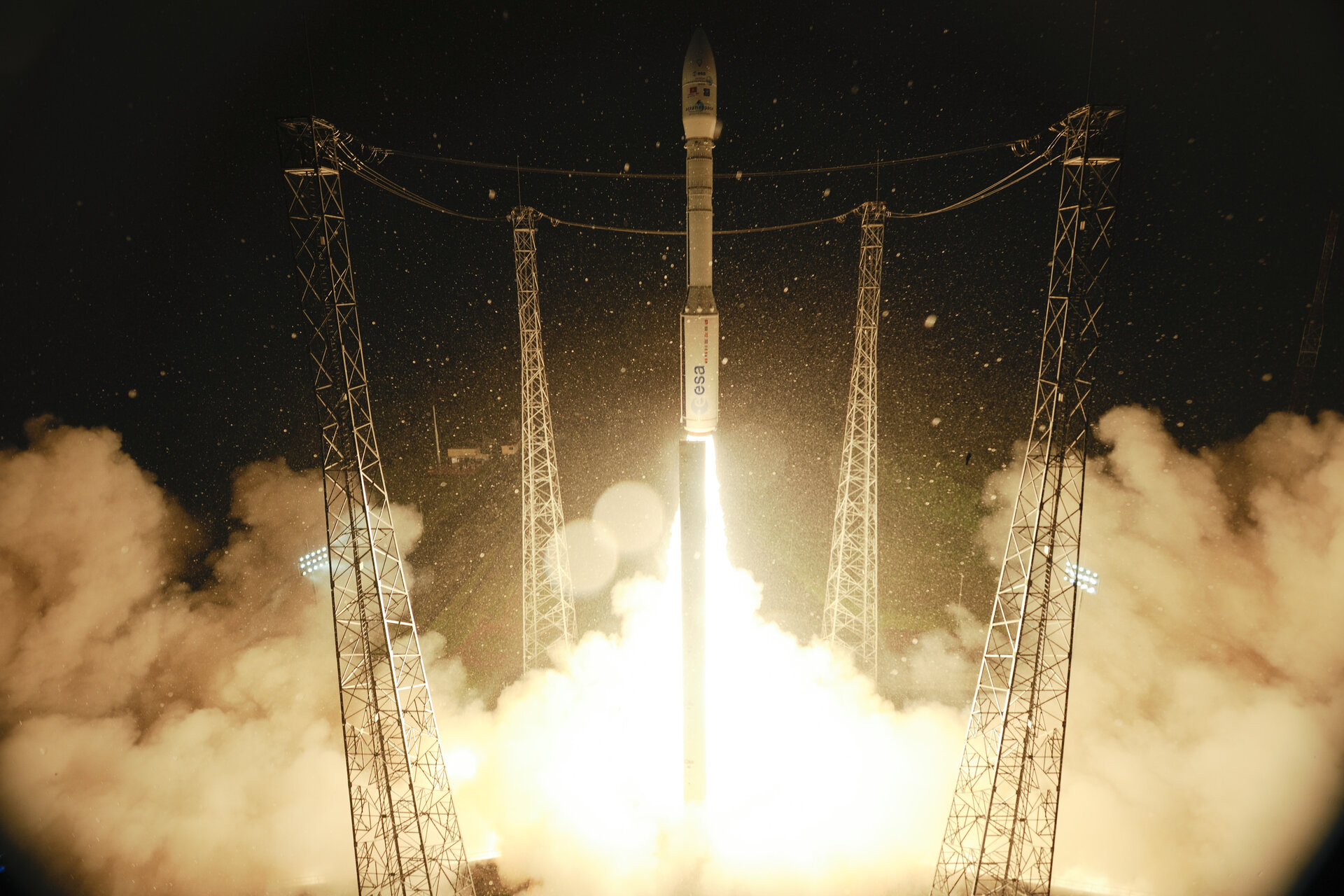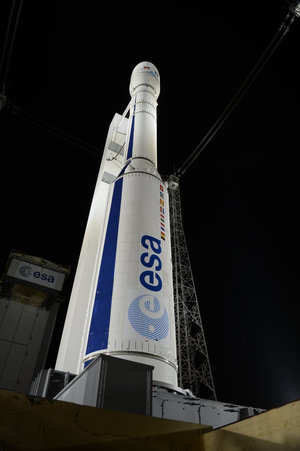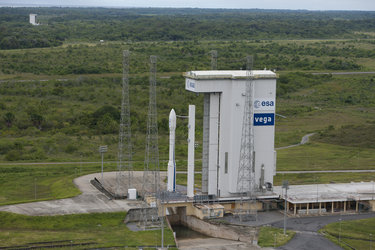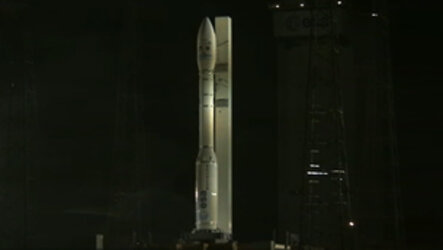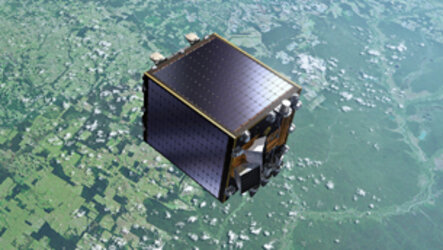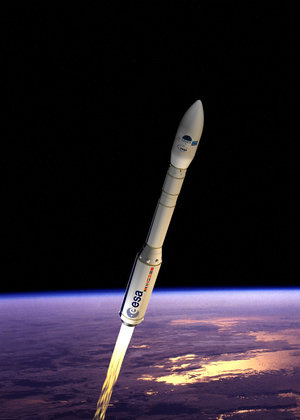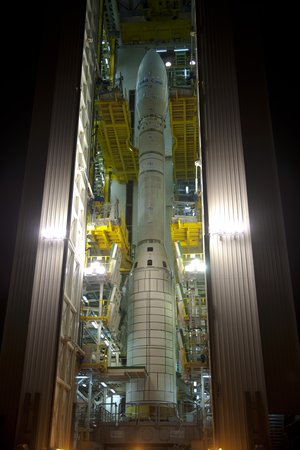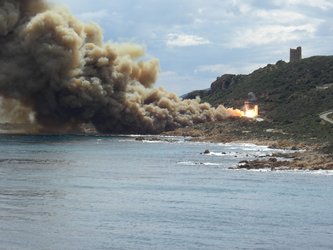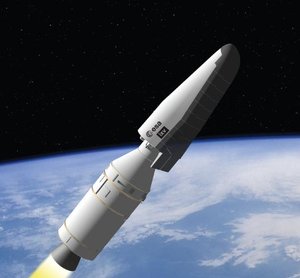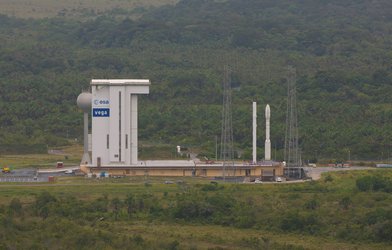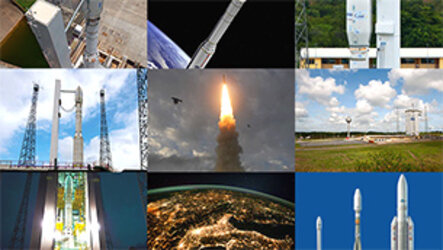Looking back at Vega’s second flight
Since Vega’s flawless second launch on 7 May from Europe’s Spaceport in Kourou, French Guiana, checks of the flight’s telemetry show the vehicle performed impeccably.
When strong winds delayed liftoff for three days, Vega stood protected inside its mobile gantry in a ready-to-launch state waiting for the countdown to resume. The satellites were safe inside the fairing and no external power was necessary – the rocket has enough battery power to stand ready for about 10 days.
On the afternoon of the launch, the mobile gantry was again retracted. Vega lifted off at 02:06 GMT on a complex mission requiring five upper-stage boosts and lasting about twice as long as its first launch, in February 2012.
Vega delivered two Earth observation satellites, ESA’s Proba-V and Vietnam’s VNREDSat‑1A, into different orbits, demonstrating its versatility. Estonia’s first satellite, the ESTCube‑1 technology demonstrator, was also released.
This complex sequence was made possible in part by the Vespa multi-satellite adapter. After the satellite on top of Vespa – Proba-V in this case – was released, the upper half of the shell separated to expose the other payloads.
This mission carried new flight software and initial examination of telemetry shows it behaved as expected. The software is flexible enough to be easily adapted to other missions. The new tracking station in the northwest of French Guiana ensured telemetry links during phases that were affected on the first flight by the plume from the solid propellants.
The upper stage’s fifth and last burn placed it on a path that ensured safe reentry within an hour, in compliance with new debris mitigation regulations.
Initial analysis shows that Vega’s mission was a complete success. A detailed analysis before the summer will verify the behaviour of all the vehicle’s subsystems.
Vega’s unrivalled success in its first two flights is an encouraging start in this light-lift launcher’s transition towards commercial operations.


